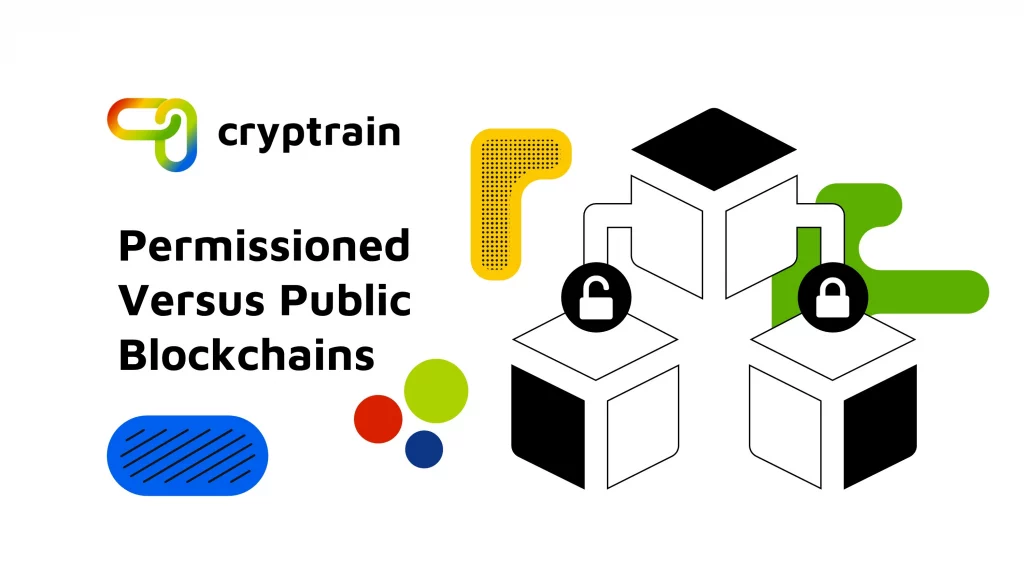
Blockchain technology is the foundation of the cryptocurrency market — since the launch of the Bitcoin blockchain in 2009, blockchain technology has disrupted a wide range of industries and verticals that include payments, startup funding and VC, traditional finance, and supply chain.
The broad use cases of blockchain technology have catalyzed interest in its potential applications from enterprises and businesses, with many organizations seeking to understand how blockchain can assist in streamlining record keeping, data management, operations, and other critical business functions.
As blockchain technology has evolved, different types of blockchains have emerged. While the first iterations of blockchain technology, such as the Bitcoin network, were designed to operate in an open and transparent manner, business applications of blockchain can require varying privacy levels.
Businesses and enterprises seeking to integrate blockchain technology are now able to leverage blockchain architectures that offer varying levels of security and privacy through permissioned, public, or private blockchains. What are these blockchain types, however, and how do they differ from one another?
What is the Difference Between a Permissioned Versus Public Blockchain?
There are two primary types of blockchain networks used today — public blockchains and private blockchains. A public blockchain operates in a transparent manner, and is open to anyone willing to participate. A private blockchain, however, is a closed network that can only be accessed by approved participants.
Both private and public blockchains use Proof of Work, Proof of Stake, or other consensus mechanisms to secure a network and validate transactions. In both cases, transactions are committed in blocks to a decentralized ledger that is maintained by every network participant.
The most important difference between public and private blockchains is that network participants must have permission to interact with a private blockchain, whereas anyone can interact with a public blockchain.
The third type of blockchain network, a permissioned blockchain, can be considered as a hybrid between a private and public blockchain. In a similar manner to a private blockchain, a permissioned blockchain requires permission to interact with — but may offer varying levels of openness to anyone depending on the requirements of the organization operating it.
What are Public Blockchains Used For?
Public blockchains make up the vast majority of blockchain networks today, and operate on public infrastructure. Anyone can join a public blockchain, such as the Ethereum or Bitcoin network, assist in network maintenance, validate transactions, and participate in the consensus mechanism.
Public blockchains are the primary catalyst of disruption triggered by blockchain technology, and are ideal for completely open, transparent protocols focused on decentralization, collaborative innovation, and self-governance.
Public blockchain networks typically incentivize network participants through mining rewards, using consensus mechanisms such as Proof of Work to disincentivize bad actors while providing network participants that assist in network maintenance with rewards.
Some of the benefits of public blockchains include a high level of decentralization, transparency, and censorship resistance, as well as extreme accessibility.
A public blockchain network is typically the best blockchain solution for an enterprise or organization seeking a completely open, permissionless platform that can benefit from the n network effects of the vast global blockchain community.
What are Private Blockchains Used For?
Private blockchain networks are typically invitation-only networks — it’s not possible to interact with or view the transactions on a private blockchain without permission. Private blockchain networks are typically centralized, with a single party controlling who interacts with the network and how.
Private blockchains are not decentralized in the same manner as public blockchains — the controlling entity that operates a private blockchain is able to edit, override, or delete transactions, give or remove mining or participation rights to participants, or assign roles to participants.
Some examples of significant private blockchains include Corda, a digital trust platform for regulated institutions, Patientory, a private implementation of Ethereum that facilitates blockchain-based medical data interoperability, and Morpheus, a private supply chain blockchain.
Private blockchains provide super security and scalability and are suitable for businesses and enterprises seeking to take advantage of the benefits of blockchain technology without exposing sensitive data or operational elements to public view.
What are Permissioned Blockchains Used For?
Permissioned blockchains are a third class of blockchain that combines elements of both public and private blockchains. Like public blockchains, permissioned blockchains are open to participation by anyone, but may restrict the ways in which participants can interact with the chain.
Permissioned blockchains integrate an access control layer that determines who can interact with the blockchain, and the level of interaction available. A permissioned blockchain may, for example, include additional security, identity, or permission management features.
In most cases, permissioned blockchains may allow anybody to create transactions on the blockchain but restrict transaction verification to limited pre-approved nodes. Some examples of permissioned blockchains include Ripple, one of the largest crypto payment platforms, and the IBM food trust, a blockchain-based food supply platform.
Which Type of Blockchain is Best for Your Business or Project?
The best type of blockchain for your business or enterprise depends on how you’re planning on integrating blockchain and the benefits you’re seeking to gain.
A business seeking to leverage the network effects of the global blockchain ecosystem and create a highly decentralized network, for example, may seek to integrate an open blockchain solution.
An organization seeking to leverage the immutability and data management benefits of blockchain technology while preventing the release of sensitive data, however, may benefit from using a private blockchain.
Whether you’re planning on integrating private, public, or permissioned blockchain technology, you’ll need to engage the services of a talented blockchain developer. Cryptrain streamlines the hiring and screening process when seeking blockchain developer talent, providing access to a global pool of verified blockchain developers.
Get in touch with Cryptrain today for a zero-cost discussion on how we can automate your hiring process and help you find the blockchain developer talent you need to launch your blockchain integration.



